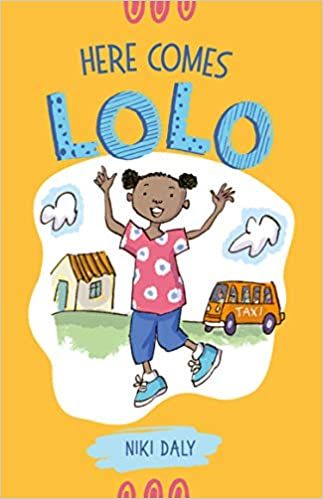Here Comes Lolo
 Here Comes Lolo
Here Comes Lolo
Juvenile Fiction / Elementary
Lolo
May 5, 2020
78

Here comes Lolo! She's kind-hearted, creative, full of fun, and she's sure to become your best friend.
With Here Comes Lolo the talented author-illustrator Niki Daly has launched a new series for young children and beginning readers. This is the second book in the series about a lively young girl who lives in urban South Africa with her loving and caring mother and grandmother (Gogo). The book has four short stories that focus on the everyday predicaments that Lolo faces, which constitute her character formation in a very natural manner. The concepts explored in the stories, however, are far from childlike; instead, they are ethical situations that young children encounter while growing up.
The first story, “A Gold Star and a Kiss for Lolo,” on a very basic level is about patience and being rewarded for learning skills at school. Lolo is impatient for the school day to end when the stars will be presented in each category, hence she engrosses herself in reading and, finally, receives the coveted gold star for reading. When Lolo loses the star and it is found by another child Lolo is distraught. With the help of her mother, she learns a deeper lesson about respecting the feelings of others.
Daly complicates the above issue in “Lolo’s Hat” when the protagonist harnesses her restlessness by being creative and painting a picture of herself wearing the pretty hat she yearns for and which her mother has promised to buy. When the hat is suddenly sold, Lolo is inconsolable. Readers will know that Mama had mentioned to Thandi’s mother that she was going to purchase the hat for Lolo on payday, hence the story is a subtle indictment against an adult who does not care about the feelings of a child but is so competitive that she buys the hat even though it does not fit her daughter. The story comes to a satisfactory end without Lolo knowing the role her wise and resolute Mother played.
“Lolo and the Lost Ring” develops a concept that is central to the first story. What should Lolo do when she finds a ring on the sidewalk? Mama helps Lolo understand that they must locate the owner. In the last story, “Lolo and a Dog Called Hope,” the scene shifts outside the confines of Lolo’s family circle when she observes a neighbor abusing his pet dog. Lolo’s deep and strong feelings prompt her to seek help; however, the solution does not come from the adults in her family—who don’t want to interfere and are afraid of retaliation—but from a character in the previous story.
Through these increasingly complex and multilayered realistic stories, Daly narrates the ordinary experiences that give young Lolo an understanding of how to be a good, caring, and honest girl. Lolo learns that in order to uphold the values of society it is one’s duty to report if something bad is happening, because that is the only way society can function smoothly. In the ultimate analysis, we are a community and must not take advantage of another person’s bad luck but must look out for the welfare of all.
The black-and-white illustrations not only provide an accurate representation of the events and background details, but they also extend the text by letting readers know that the stories form a cohesive whole, and that the values Lolo learns have a cumulative effect in shaping her character. While Daly refrains from providing cultural or racial details in the written text, his drawings provide specificity, thus reflecting the racial and cultural diversity of South Africa. In doing so, the illustrations further reinforce the concept that social interactions are not dictated by race or skin color but by universal human nature.
Reviewed by Meena G. Khorana, PhD, Retired Professor of Adolescent Literature, Morgan State University Baltimore, Maryland
Published in Africa Access Review (August 24, 2020)
Copyright 2020 Africa Access
